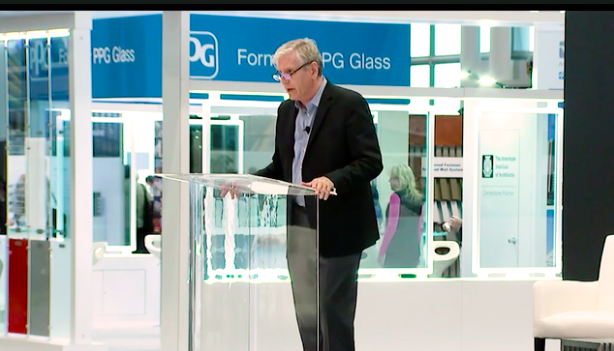 Click here or on the image above to view the video of Kermit Baker’s presentation
Click here or on the image above to view the video of Kermit Baker’s presentation
This week AIA chief economist, Kermit Baker, released his Top 10 factors influencing the built environment and discussed the impact they will have on business. Following is a summary of his findings, while the above video provides a deeper dive into his thinking.
Top 5 Challenges for the A/ E/ C community
1. Labor force: Few women and young people (under 35) are attracted to the construction labor force, 3.1% and 33.2% respectively. Immigrants, however, are attracted to the work, but half of the immigrant workforce in construction is undocumented and are vulnerable to deportation.
2. Construction costs: Costs are rising faster than inflation. Overall inflation is up 40% since 2001, while construction land, labor and material costs are up 80-90%.
3. Housing affordability: Housing costs are rising faster than incomes. The recommended ratio of house price-to-income ratio is 3 times an annual income. In some US locations – mostly coastal cities and parts of Arizona – the ratio is 5 or 8+ times the average income.
4. Challenging demographics: Projections for 2020-2030 show that three-quarters of the net growth for wealth or income will be for people ages 65 and older.
5. Productivity at architecture firms: Productivity has only inched upward despite technology advances at firms. Much greater gains were expected. Productivity did not increase any faster even at larger firms, which generally invested more than others in newer technologies.
Top 5 Opportunities for the A/ E/ C community
1. Work on existing buildings – such as upgrades and retrofitting – continue to hold steady at approximately 45% of projects even as the construction economy has recovered. There are growing incentives to improve older buildings – a major opportunity for architects to make existing buildings more energy efficient.
2. International construction opportunities continue to rise. Of worldwide construction, 50% is in Asia, 20% in Europe, and 15% in North America, with the U.S. share being 12%. The US, however, is likely to decrease as other regions, like Asia, continue to rise.
3. A technology breakthrough is expected for either design or construction. When asked, firms said they believe the top technological advancements that will have a significant impact on the field over the next 5-10 years will be VR/AR, I-O-T, and enhanced construction materials and offsite construction.
4. Architecture billing has remained healthy through 2017 and so far in 2018, with the rest of the year looking optimistic.
5. Industrial and institutional projects are on the rise and may offset commercial projects, which appears to be slowing in 2019.


